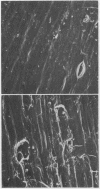Abstract
Evidence obtained on the relation between the pH of the medium and the growth of intact stem sections is compatible with the acid-growth theory only if the proton conductance of the cuticle is so low that the cuticle is an effective barrier to the entry or exit of protons from the tissue. By measuring the rate at which protons cross frozen-thawed epidermal strips of sunflower (Helianthus annuus L.) and soybean hypocotyls (Glycine max Morr.) and enzymically isolated cuticles of Berberis aquifolium Persh. and tomato (Lycopersicum esculentum Mill.) fruit, we have now demonstrated the low proton conductance of the cuticular layer. Unless the conductance is enhanced by abrasion of the cuticle or by removal of the cuticular waxes, proton movement into and out of a tissue across the cuticle will be significant only over long time periods.
Full text
PDF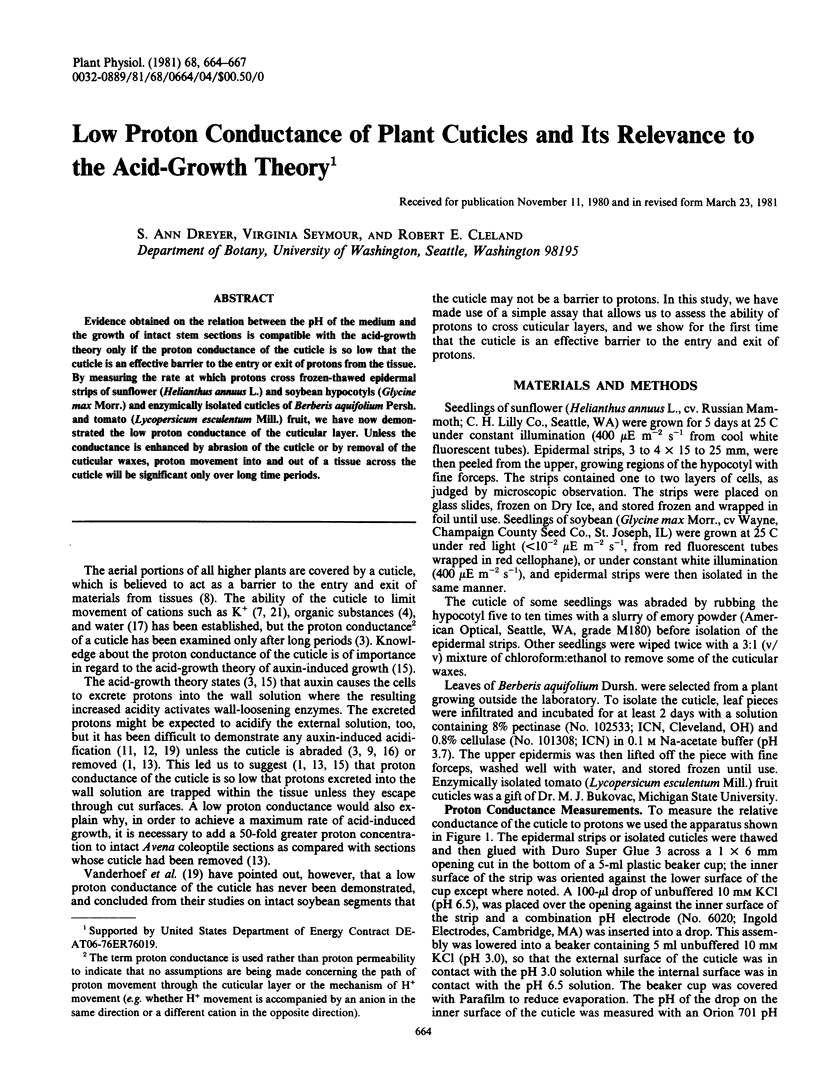
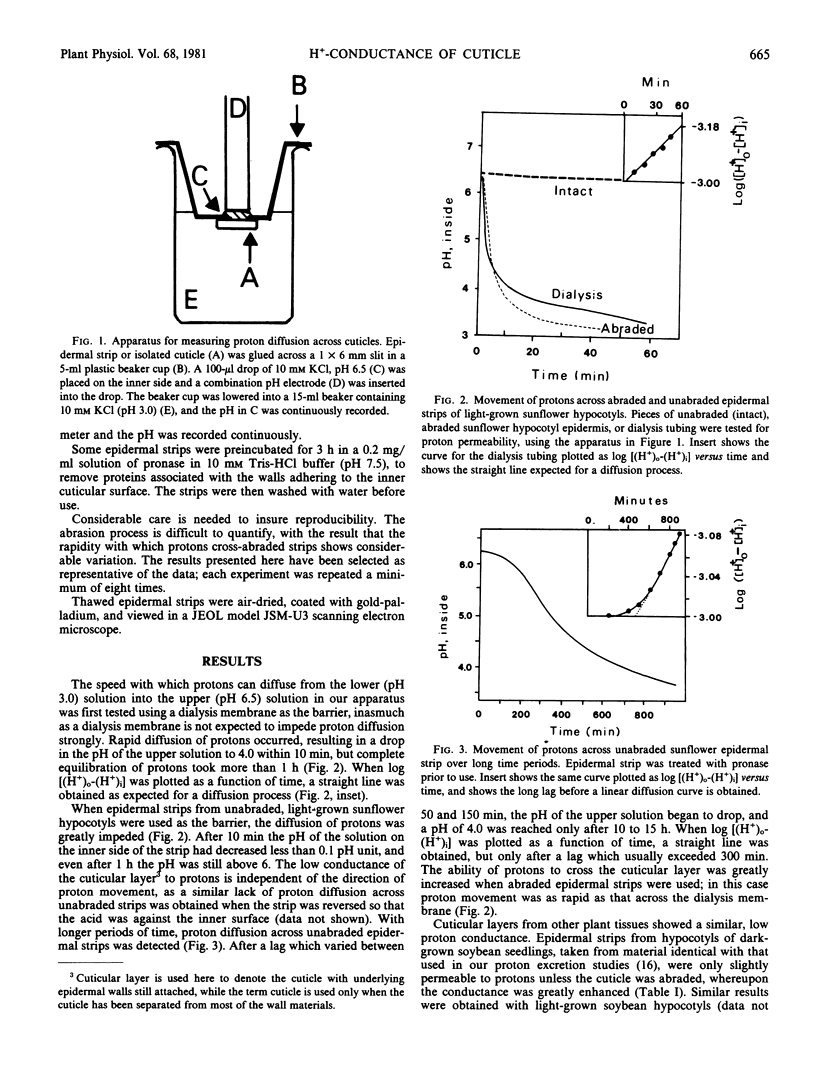
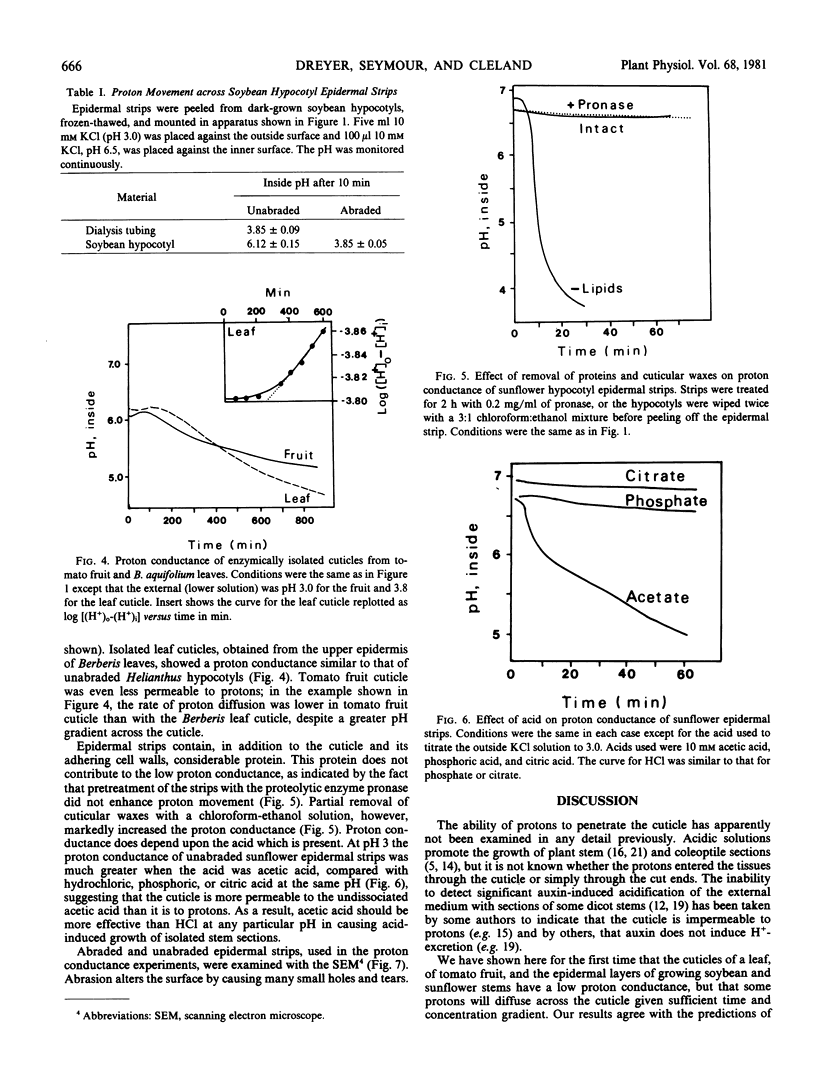
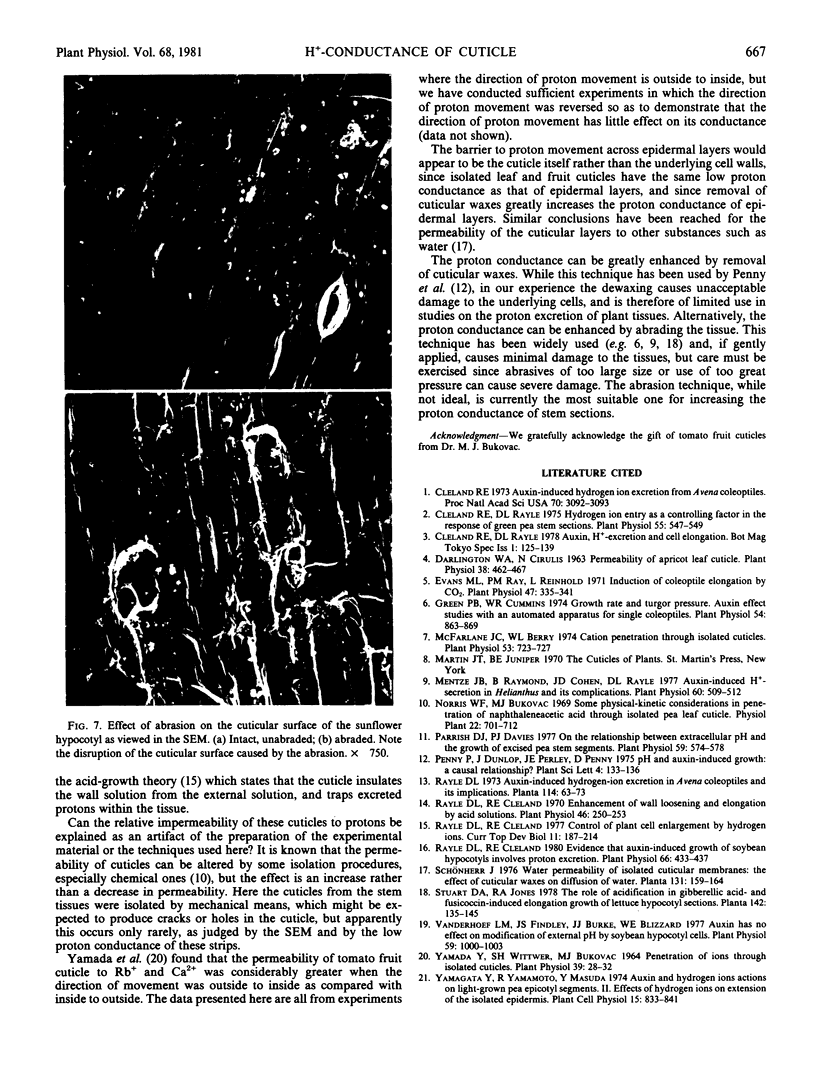
Images in this article
Selected References
These references are in PubMed. This may not be the complete list of references from this article.
- Cleland R. E. Hydrogen Ion Entry as a Controlling Factor in the Acid-growth Response of Green Pea Stem Sections. Plant Physiol. 1975 Mar;55(3):547–549. doi: 10.1104/pp.55.3.547. [DOI] [PMC free article] [PubMed] [Google Scholar]
- Cleland R. Auxin-induced hydrogen ion excretion from Avena coleoptiles. Proc Natl Acad Sci U S A. 1973 Nov;70(11):3092–3093. doi: 10.1073/pnas.70.11.3092. [DOI] [PMC free article] [PubMed] [Google Scholar]
- Darlington W. A., Cirulis N. Permeability of Apricot Leaf Cuticle. Plant Physiol. 1963 Jul;38(4):462–467. doi: 10.1104/pp.38.4.462. [DOI] [PMC free article] [PubMed] [Google Scholar]
- Evans M. L., Ray P. M., Reinhold L. Induction of coleoptile elongation by carbon dioxide. Plant Physiol. 1971 Mar;47(3):335–341. doi: 10.1104/pp.47.3.335. [DOI] [PMC free article] [PubMed] [Google Scholar]
- Green P. B., Cummins W. R. Growth rate and turgor pressure: auxin effect studies with an automated apparatus for single coleoptiles. Plant Physiol. 1974 Dec;54(6):863–869. doi: 10.1104/pp.54.6.863. [DOI] [PMC free article] [PubMed] [Google Scholar]
- McFarlane J. C. Cation Penetration through Isolated Leaf Cuticles. Plant Physiol. 1974 May;53(5):723–727. doi: 10.1104/pp.53.5.723. [DOI] [PMC free article] [PubMed] [Google Scholar]
- Mentze J., Raymond B., Cohen J. D., Rayle D. L. Auxin-induced H Secretion in Helianthus and Its Implications. Plant Physiol. 1977 Oct;60(4):509–512. doi: 10.1104/pp.60.4.509. [DOI] [PMC free article] [PubMed] [Google Scholar]
- Parrish D. J., Davies P. J. On the Relationship between Extracellular pH and the Growth of Excised Pea Stem Segments. Plant Physiol. 1977 Apr;59(4):574–578. doi: 10.1104/pp.59.4.574. [DOI] [PMC free article] [PubMed] [Google Scholar]
- Rayle D. L., Cleland R. E. Evidence that Auxin-induced Growth of Soybean Hypocotyls Involves Proton Excretion. Plant Physiol. 1980 Sep;66(3):433–437. doi: 10.1104/pp.66.3.433. [DOI] [PMC free article] [PubMed] [Google Scholar]
- Rayle D. L., Cleland R. Control of plant cell enlargement by hydrogen ions. Curr Top Dev Biol. 1977;11:187–214. doi: 10.1016/s0070-2153(08)60746-2. [DOI] [PubMed] [Google Scholar]
- Rayle D. L., Cleland R. Enhancement of wall loosening and elongation by Acid solutions. Plant Physiol. 1970 Aug;46(2):250–253. doi: 10.1104/pp.46.2.250. [DOI] [PMC free article] [PubMed] [Google Scholar]
- Vanderhoef L. N., Findley J. S., Burke J. J., Blizzard W. E. Auxin Has No Effect on Modification of External pH by Soybean Hypocotyl Cells. Plant Physiol. 1977 May;59(5):1000–1003. doi: 10.1104/pp.59.5.1000. [DOI] [PMC free article] [PubMed] [Google Scholar]
- Yamada Y., Wittwer S. H., Bukovac M. J. Penetration of Ions through Isolated Cuticles. Plant Physiol. 1964 Jan;39(1):28–32. doi: 10.1104/pp.39.1.28. [DOI] [PMC free article] [PubMed] [Google Scholar]



